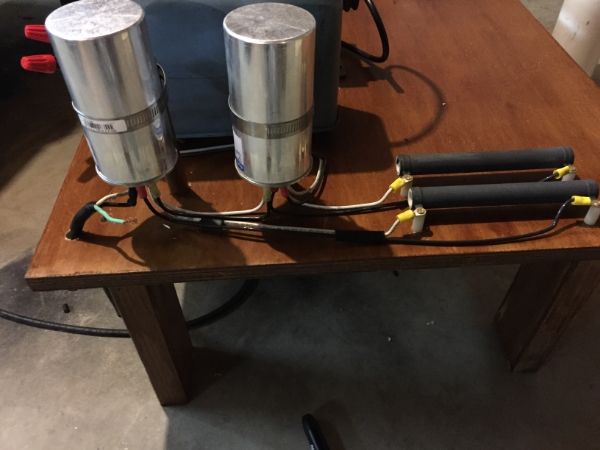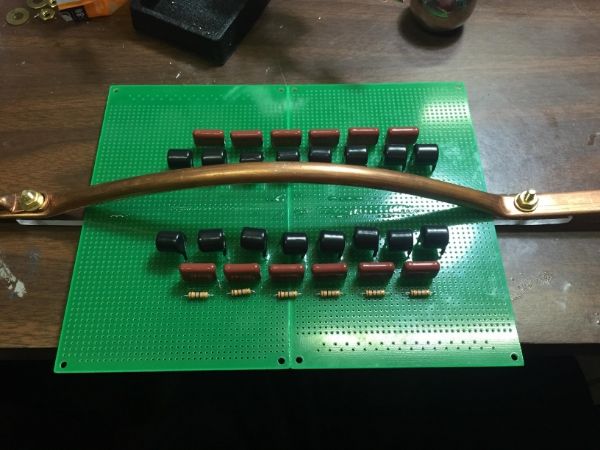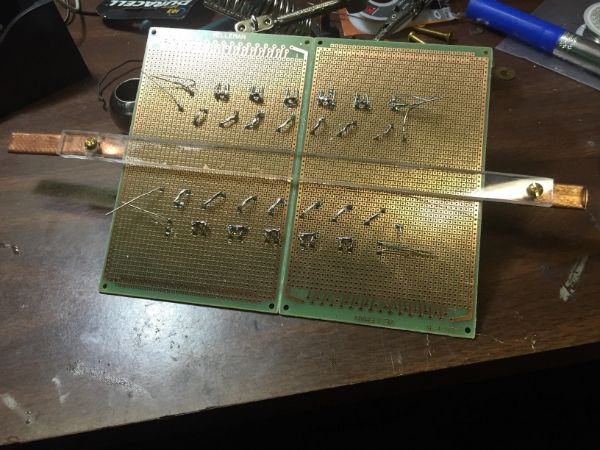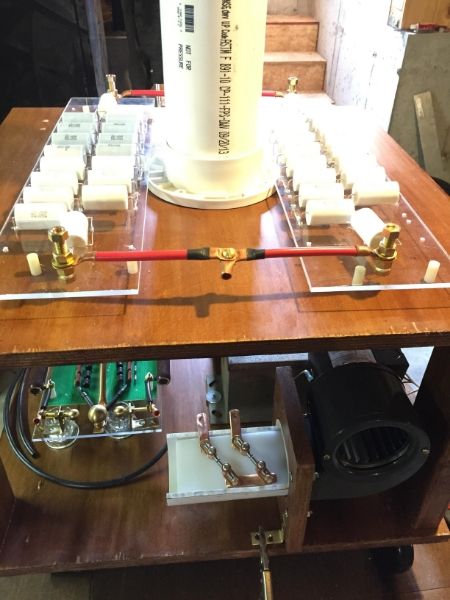here is a review of my SGTC built to date. im building this stages and this is as far as ive gone. Lots more work to do! so far the PFC caps are bolted down, bleed resistors are secured and one NST is bolted everything else can be moved
2x 15kv 30ma NSTs
36 DB .15uF caps (2 strings of 18) 16.7nf
2x 70uF run type PFC cap run in parallel. (Tesla map recommends opt. 166uf)
4x 100W 1000ohm resistors. 2 for terry filter, 2 for PFC cap bleed resistors.
4 pair of tungsten rods for primary spark gap.
62cfm PC fan.
not built yet:
4" pvc for secondary W/ 24awg
1/4 tubing for primary.
spark gap not built yet.
Terry filter not connected yet.
So here is my Table. I know most people seem to build their TCs in stacks but for easy access to components and visibility I built mine on this table design. I know this increases the risk of strikes from streamers to my NSTs, caps, and filter but im hoping to mitigate this by building a platform on the table to elevate the primary, secondary coil and top load away from vital components. also the use of a strike ring directly connected to the RF ground.
The tungsten spark gap strips are not secure. they will be mounted on the copper strips and be bolted to plexiglass and placed inside a 4" Pvc pipe to maximize quenching.(I plan to spilt the pipe like a clam shell so I can make adjustments to the Tungsten rod gaps then replace the top like a cover to run the TC.
if you can visualize this for me the white box will be a 4x4 a 1' to 1.5' tall supporting a platform made of plexiglass or wood the primary will sit on. I know this is a large design im not really trying to save space.

another configuration note also there will be 36 capacitors. pictured is only for display.

PFC caps are run in parallel each capacitor has its own bleed resistor wired across the terminals. all wiring is 12 awg. HV side is HV 14awg cable.

grounding and high amp wiring: 8 foot copper grounding rod pounded into the backyard. 4awg flexible cable should be able to take the amperage. most connections on this table are brass or copper.
What are your thoughts? how should I change my design? should I secure the NSTs under the table? one concern I have is the bleed resistors are screwed through a nylon spacer to the wood(wood can be conductive). should those screws be replaced with nylon bolts?
I haven't done a flame test but I might this weekend.
thank you:thanks:













